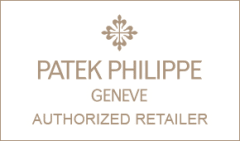
QUALITY CRITERIA FOR COLOUR GEMSTONES
WHAT MAKES THESE COLOURFUL STONES SO SPECIAL
THE QUALITY CRITERIA: WHAT MAKES COLOUR GEMSTONES SO PRECIOUS
The purchase of a gemstone is a matter of trust. So is the procurement of gemstones. That is why we only use natural gemstones in our jewellery collections. By providing the precise enhancement code and maintaining an internationally recognised coding system for gemstone treatments, we ensure transparency for our customers.

COLOUR – THE WHIMS OF NATURE
Bright and clear colours are rare in the world of gemstones. So it is hardly surprising that the value of a gemstone depends on the quality of its colouring. In order to determine the value of a colour gemstone, our experts examine it closely and evaluate the basic colour, tone, intensity and distribution as well as the change and interplay of colours. The sparkling properties of a gemstone result from different factors impacting the stone during its formation:
- The colour of a gemstone is determined by its chemical composition and/or crystalline structure. If minuscule particles of metallic trace elements become trapped inside a crystal structure during its formation, colour gemstones are the result.
- Irregularities in crystal growth can also cause colours to develop. Selective filtering of the light that penetrates the inside of the crystal only permits certain parts of the light spectrum to exit again. Our eyes then perceive this light as the stone’s colour.
The variety of colours is so enormous that there are rarely exact terms for every individual hue; the closest we can come is as exact a description of the colour as possible. A good example is the multicoloured tourmaline family, which is found in over 1,000 different colour variations and tones in nature.
CUT AND SHAPE – THE SOUL OF THE STONE
Each gemstone is predetermined for a particular shape due to its crystalline structure. The shape and quality of the raw stone determines the final appearance of a gemstone. The best gemstone cutters can bring out the optimal colour and natural brilliance of a raw stone – for only when a gemstone has been correctly cut does it sparkle in its full and consummate beauty. Perfectly cut gemstones give each piece from the Bucherer Fine Jewellery collections its unique character.
WEIGHT – A HEAVY MATTER
The quality of gemstones has been determined by their weight since antiquity. It is expressed in carats, the one quantifiable factor for evaluating colour gemstones. Carat as a unit of measurement has existed since antiquity (1 ct = 0.2 g).
Hardness – a gemstone’s inner strength
The hardness of a gemstone also determines its quality. At one time, hardness was one of the few characteristics that could be used to properly assess the quality of a gemstone, because a gemstone that is harder will leave a scratch on one that is softer. Gemstones can be rated on a hardness scale from 1 to 10. Corundum (sapphire and ruby) has a hardness of 9, making it the world’s hardest colour gemstone. This is exceeded only by diamond, the hardest naturally occurring mineral on earth, which tops the scale with a hardness of 10.
TRANSPARENCY – THE EPITOME OF CLARITY
The transparency of a gemstone is a testament to its clarity and therefore one of the quality criteria used to determine its value. However, certain kinds of inclusions can turn a gemstone into something truly special – and serve as reliable indicators of their authenticity. Sometimes these stones even steal the spotlight from their pure counterparts.
In highly coveted star rubies or star sapphires, for example, needle-like inclusions form a six-rayed star that appears to float elegantly on the surface of the colour gemstone.
In addition to creating beautiful special effects and acting as a natural certificate of authenticity, inclusions can also be considered to be a gemstone’s “fingerprint”, telling us the story of where it came from and how it was formed.



